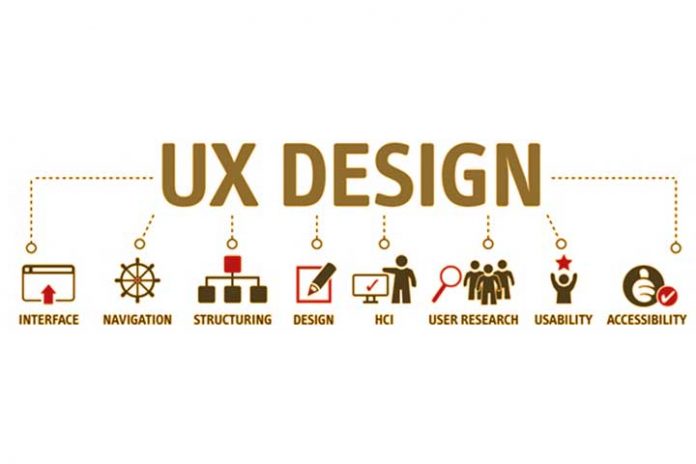Affordable, usable, and desirable are three words that clearly define the objective pursued by UX design, an acronym in English for User Experience. It is based on developing both products and marketing processes and services based on the user’s wishes, needs, and expectations.
Are you involved in digital marketing? If the answer is yes, then this section is for you. Learn here everything you need to make your sales processes friendly.
All about UX design
It seeks to implement a strategy that, from the user’s perception, makes the use of the platform to purchase products and services comfortable, attractive, and pleasant. The term UX was first coined at Apple in the 1980s, with the idea of developing user-friendly systems.
This technique is nothing new, but it has meant crucial innovations in the field. Thus, it differs from traditional marketing, focusing not on the product but the services provided and the entire procurement process.
Three basic components in UX design
Please consider that it is not about selling a product only for its quality, but also because it is easy to acquire because accessibility is desirable. Thus, developing sales strategies from the user’s perspective facilitates the search, the meeting, and finally, the choice of a product.
Now, you must remember that there are three interdependent planes of user interaction: the UI, Usability, and the UX itself. These three levels work together and are based on the client’s psychology to achieve an excellent User Experience.
The UI
User Interface is what the individual interacts with directly, such as the screen, buttons, or windows. This level is related to graphic design, always based on the user’s gaze to facilitate its use.
Usability
This point is related to user comfort, facilitating access to the interface through different possibilities. For example, you can delete or save settings as you change your mind.
In addition, it tries to keep the user informed about the web in which they are, speaking the same language and providing easy-to-understand concepts. Thus helping to establish a logical order of the functionalities of the web.
It is vital that the user feels that they have the control and freedom to make mistakes and correct without problems. Therefore, excellent usability is the one that knows the possible errors previously to commit, preventing them from using different containment techniques.
Excellent usability does not generate stress or tension on individuals, allowing them to feel comfortable and informed. For this, the potential user must be well known, their mental structure (psychology), their social environment (sociology), and their habits and customs (anthropology).
UX Design, User Experience
One of the most subtle and complex functions is the information that the user needs to know, helping them choose what they want and encouraging them to choose, and taking into account your culture, lifestyle, mental makeup, and interests.
The UX design mechanism involves research from the perspective of various disciplines, making the user feel comfortable and easily find and access products. This helps you efficiently solve any problem, feeling safe and relaxed with the use of the site, thus increasing the chances of making a deal.
Also Read: Everything You Need To Know About UX And UI
Methods and Tools used
Research in the field of marketing for UX does not differ too much from the social sciences, and in fact, it is from where its approach starts. This is done with complete rigor, and many companies dedicate entire departments to the subject.
Like all research, you must define the problem well; it focuses on attracting users or buyers. Resulting in social research, whose main source is the potential buyers themselves.
The topics or research spaces are concrete and refer, on the one hand, to problems to be solved, goals, needs, and expectations. And on the other hand, to the lifestyles, tastes, dreams, customs, and habits of each person.
Basic steps to conduct a user experience investigation
Define an ideal study population, user, or buyer. This step can be simple or complex and will depend on the type of service or product offered to customers.
Establish the problem to be dealt with, this being the recruitment of the population, in addition to any inconvenience or limitation to access it.
Various methods and tools will be applied to know individuals’ lifestyles or main general problems, needs, and expectations.
Collecting the respective qualitative and quantitative information according to the methods used is ideal, allowing better conclusions.
The final evaluation phase is carried out once the interdisciplinary team has a proposal for the user or buyer, making it possible to measure the success of the research.
Data capture
UX research is based on qualitative methods such as interviews, focus groups, and ethnography. The decision to use all three data collection tools or just one will depend on the investigation’s time, cost, and objectives.
The design of a data collection tool is vital for further processing by the research team. Among the commonly used instruments is Empathy Maps, where you can group, compare and relate tastes or preferences. Or, the User Journey Maps platform delves into users’ or buyers’ needs and aspirations.
Methods for evaluation
There are many ways to test a final proposal from the UX research team, and one of them is with direct experience, using a sample of ideal users or buyers.
A quantitative evaluation tests the final product with real users or buyers using experience monitoring tools. Some of these tools can be Clickstream Analysis that analyzes clicks on the web, or Funnel Analysis to visualize user and buyer behaviours.
Thus, with an excellent strategy, you will achieve a repetitive use of the web, increasing visits and keeping the user more time on the screen and obtaining; as a result, a good perception of the service or product offered, maximizing profits.
Also Read: How To Create And Promote A Business Blog Step By Step

